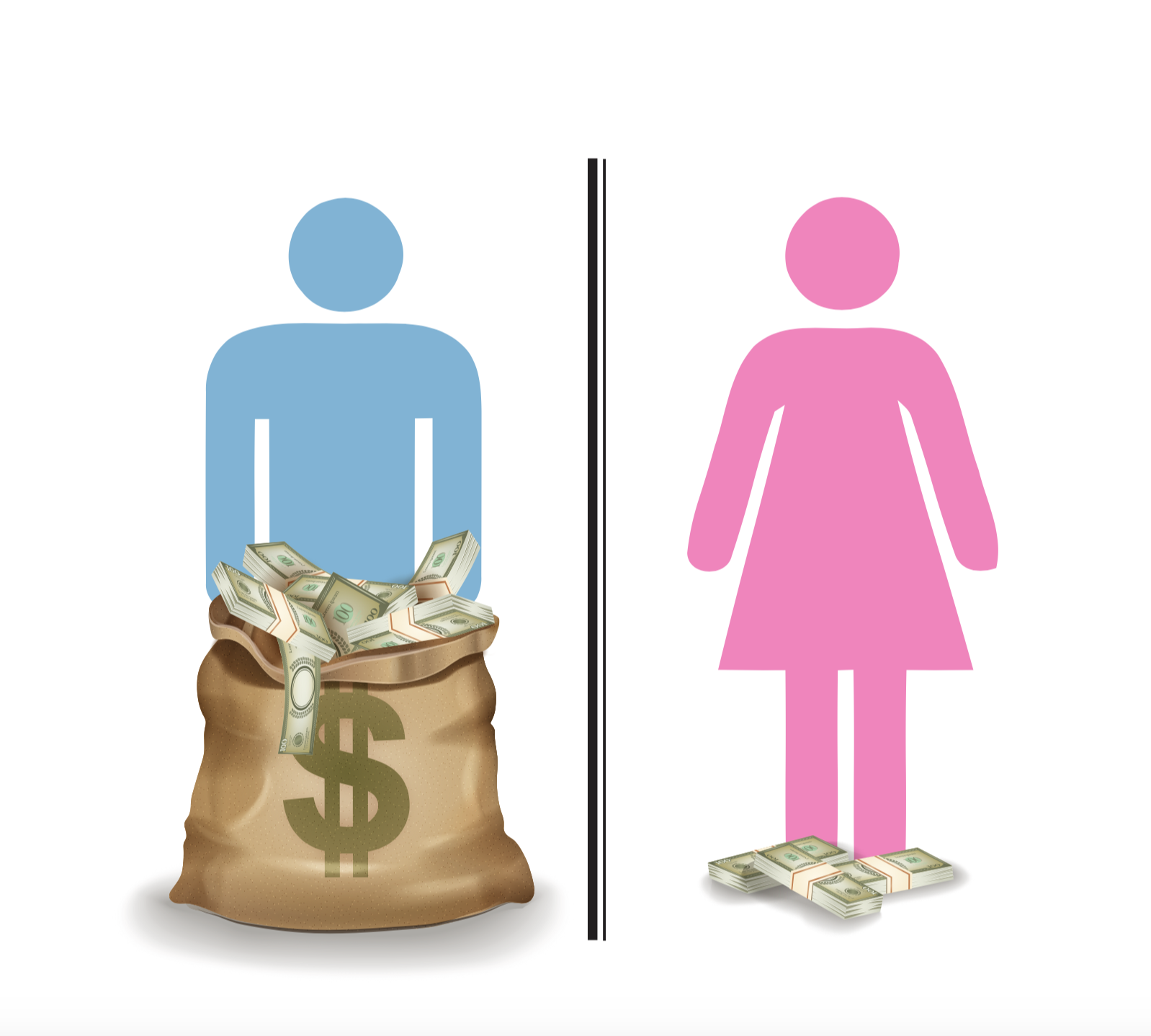By Kelsey Reichmann & Jordan Darling
Editor-in-Chief & News Editor
Click here to view all information obtained by The Bulletin.
The CSUDH Academic Senate commissioned a Gender Equity Task Force this semester. Its stated goals are to “assess current DH practices and outcomes, research best practices and structures, and report and make recommendations,” according to the meeting minutes of the April 24 Academic Senate Meeting.
The Bulletin filed a public records request with the Office of Administration and Finance in order to obtain all salaries of instructional faculty at CSUDH to do our own analysis.
Our analysis looks first at gender between rank, and then between colleges within the ranks. The analysis excludes any library faculty and faculty who hold administrative titles.

The Bulletin found:
- Male assistant professors earned an average of $131.38 more a month and $1,576.56 a year than their female counterparts.
- Male associate professors earned an average of $530.82 more a month and $6,369.84 a year than their female counterparts.
- Male full professors earned an average of $674.67 more a month and $8,096.04 a year than their female counterparts.
The Bulletin staff felt that in the interest of transparency the faculty and students on campus should be able to see this information before the fall of 2020, which is when the Gender Equity Task Force report is set to release, according to the chair report in the minutes of the April 24 Academic Senate meeting.
The Bulletin was warned prepublication that our analysis may be inaccurate.
“[There] are concerns about putting it out there and creating a false impression of the campus,” Laura Talamante, chair of the Academic Senate, said.
“I would caution you on reaching premature conclusions based solely on an internal analysis by Bulletin staff,” Michael E. Spagna, provost, and VP of Academic Affairs, said “Because this information requires a series of comparisons that account for a variety of factors (e.g., years of service, incoming hiring salary, equity increases, etc.), this will become a centerpiece task of the Gender Equity Task Force as it embarks on its work.”
These factors, however, would suggest that all male professors have more years of service, a higher incoming salary, equity increase, etc. than female professors.
When asked this specific question, Christopher Monty, chair of the history department and member of the academic senate, said, “No, that should balance out…this is a pattern that can’t be explained away.”
“I’m shocked but not surprised,” Kate Fawver, professor of history and chair of the University Budget Committee, said.
One criticism of comparing all faculty by gender is that it does not take into account equity across colleges.
“Certain majors and areas of study have historically been dominated by one gender or another e.g. business and nursing,” Alice K. Kawakami, CSUDH faculty affairs, said. “This would affect the numbers of faculty by gender. This has been changing over time, but gender and salaries may not have become equal as yet. Faculty that have had greater years of service likely have accrued numerous salary increases, which would also affect the salary figures. A broad comparison of male/female over all the disciplines would not necessarily give a complete or accurate picture. A nuanced analysis needs to be undertaken to better understand the issues involved.”
So, The Bulletin decided to analyze our data further.
Professors
- Males on average make more in CBAPP ($738/month), CNBS ($782.31/month), and COE ($2,089.37/month)
- Females on average make more in CAH ($73.04/month) and CHHSN ($1,250.83/month)
Associate Professors
- Males on average make more in CAH ($585/month), CHHSN ($611.44), and CNBS ($712.75/month)
- Females on average make more in CBAPP ($76.81/month)
- COE only has female associate professors.
Assistant Professors
- Males on average make more in CHHSN ($262/month) & CNBS ($20/month)
- Females on average make more in CAH ($223/month), CBAPP ($474/month), & COE ($166/month)
If The Bulletin’s analysis is correct, it corresponds with studies.
According to an April 2018 Inside Higher Ed article, “AAUP [American Association of University Professors] data this year show that 93 percent of all participating institutions pay men more than women at the same rank.”
The benefit of these data, the article argues, is to “help faculty members work toward greater pay equity for part-time faculty members, increased state funding for higher education, and other improvements — such as salary equity between men and women.”
The Bulletin would like to make clear that this analysis does not take into account ethnicity, hire date, or promotions.
Besides disparities between genders, the data also shows major disparities between different colleges.
It is also important to note that all of the colleges, except for the library, have male deans and the provost and president are males. These people are important in hiring and salary decisions at the university.


Amen on using statistical analysis. Length of tenure, PhD vs MS vs MPH vs MBA vs Bachelors only, ranking of school from which they received their graduate degree, etc. are all important variables. It makes no sense to compare someone with 30 year experience to someone with 5 and expect any meaning. Regression analysis would be a simple way to gain a valid answer. And, it could easily cut either way.
It is highly recommended that all public records requests be made in writing. Any person seeking access to a public record must provide the Division with a reasonable description of the desired information, including specific time periods for which the records are sought, so that the records can be identified and located promptly. All requests for public records must receive a response from the Division as soon as practicable, without unreasonable delay, and within 10 days. The Division’s response can be a request for further clarification on the nature of the records sought, an offer to provide the requested materials, or a written denial detailing the specific legal basis for withholding the requested materials. The Division’s Public Information Officer is responsible for responding to such requests.